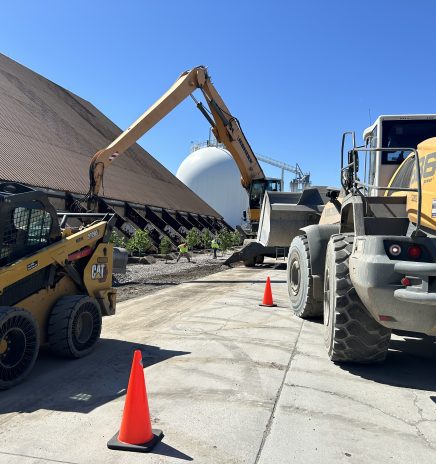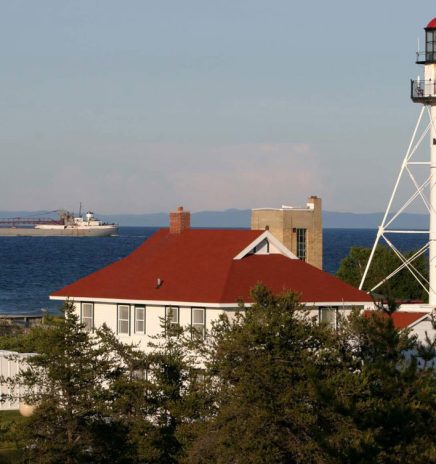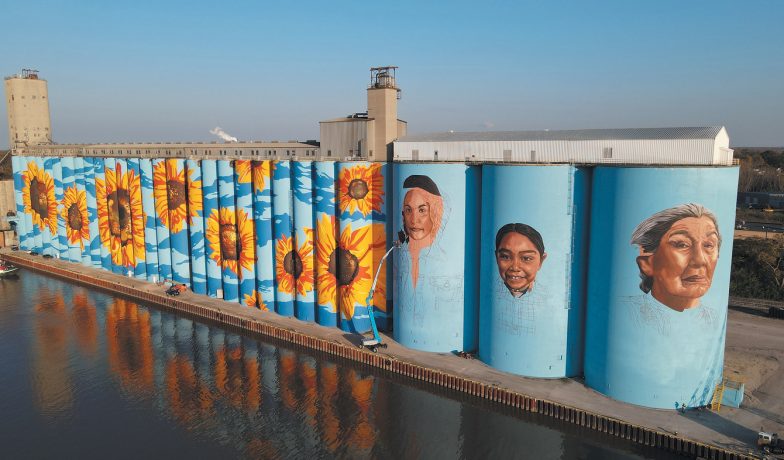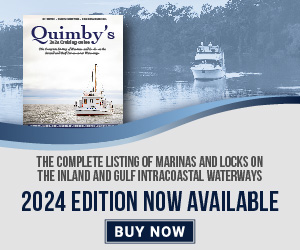The Beauty of Grain Silos: Art project at Toledo port to be the biggest mural in the U.S.
Visible from Interstate 75, downtown Toledo and the Maumee River, the Glass City River Wall will feature a field of sunflowers, blue sky and portraits of a Native American grandmother, mother and daughter.
Colors are already brightening the setting. Work will be complete this year.
Community Partnerships
The project is the vision of not-forprofit Urban Sight and has received funding from Archer Daniels Midland Company (ADM), which owns the silos, and the City of Toledo, along with other local businesses and individuals.
The idea for the project began about 212 years ago, when a group of friends were boating on the Maumee River and found their river view blocked by the giant concrete silos. Wouldnt it be great, they thought, if someone would paint some sort of eye-catching art on them, making them a visual benefit to the Toledo skyline?
One of the women in that boat happened to be friends with Christina Kasper, an art consultant who chose to quit her job to become president of Urban Sight and spearhead the mural project.
Artist Gabe Gault of Los Angeles, Calif., submitted the winning design. Although he is overseeing it, a team of local artists is painting the silos western front. The first of some 3,000 gallons of paint was sprayed on from three, 135-foot articulated lifts beginning June 2.
Sunflower blossoms now bloom on a sky blue background with swaths of darker blue on 25 silos that abut each other – creating a perfect horizontal “canvas.” Three wider silos at the end will feature the Native American portraits but, for now, have only facial features and outlines of the figures. The mural is about 85% complete.
“It was really our goal for everybody to see a little bit of themselves in that mural: hope, positivity, whatever it was,” Kasper says.
A Massive Undertaking
When completed, the mural will be 170,000 square feet, making it 100,000 square feet larger than the current U.S. record holder for mural size.
The mural stretches 135 feet tall along the waterfront, facing the water. Because of its enormous height, it is visible to an average of 82,365 vehicles passing on nearby I-75 each day, according to the Ohio Department of Transportation. That adds up to about 30 million views a year.
The mural features Native Americans in part because it celebrates the first farmers of the region, Kasper says. They were also the first economic developers in the region, recognizing the value of the Maumee River. The silo facility is on Miami Street, acknowledging the Native American tribe of that name which once lived along the river.
Kasper sees the mural as “integrally investing and changing the landscape of Toledo.”
Persisting Through a Pandemic
When dreamed up in 2019, the developers had hoped to have the mural completed before the Solheim Cup, a prestigious international women’s golf tournament held in Toledo in 2021. Unfortunately, the coronavirus pandemic hit the United States in March 2020, causing substantial delays.
Initially projected to cost $750,000, the project is facing $200,000 in overages, in part because of the extended timeline, along with unexpected expenses and weather delays. Work halted for two and a half weeks at one point because resin – the thick paint used to coat the silos – was unavailable for purchase.
Painting paused again in December for the winter months, and developers turned their attention to an online Kickstarter fundraiser in which the community showed their support for the mural by raising the last $50,000 needed to both construct the mural and maintain it for 10 years. The money was raised in 30 days, with renewed media attention and donor support bringing in the last $17,000 in a single day.
Although incomplete, the mural is already garnering attention, both from passersby and from national media. CBS Sunday Morning featured the mural project in a segment in October.
“We got enough done that I think it put Toledo on the map,” Kasper says. “Nobody will ever pass our city again without knowing exactly where they are, which is a really compelling moment.”
Kasper is also quick to point out an educational component of the mural. Urban Sight has worked closely with the Miami Center at Miami University in Oklahoma, which provided live models for two of the portraits to ensure authenticity in depicting the Miami tribespeople.
“They’ve been integral in being a guide, she says. They came to us very quickly and said we view Native Americans as people of the past, but they are a people of the past, present and future.”
Developers have worked with the university to provide an age-adjustable K-12 curriculum on the project’s website at glasscityriverwall.com. The curriculum guides students to ask themselves questions such as, “What story about you hasn’t been told, and how will that change the world?”
Spotlighting River Business
Although the silos are the backdrop for the mural, they are also actively used by ADM for storing grain and are among Toledo’s greatest economic assets, according to Kasper.
“This is an incredible way to put a floodlight on that,” she says.
Joe Cappel, vice president of business development for the Toledo-Lucas County Port Authority, agrees.
“It’s pretty cool,” Cappel says with a grin. “We’re getting a lot of attention for it. It increases people’s awareness of the Port of Toledo. They may not have noticed those gray-green silos before, as they blended into the industrial feel of the area. Now people are saying, ‘What are those? What are those used for?'”
The mural is serving as a great segue into conversations about how the Toledo port is capable of exporting waterborne cargo – not just importing it, according to Cappel.
The mural background is a striking shade of sky blue that turns people’s heads. Cappel has watched it evolve.
“It started as a big blue background, and then we started to see the outline of flowers going up,” he says. “The portrait’s not finished yet, but you can see the outlines there, and it’s really exciting.”
The mural is the perfect addition for the port area, which is starting to see old warehouses converted into businesses and residences. There are now bars and restaurants where there was once vacant industrial space.
“There is probably more to do in downtown Toledo than there has been in quite some time, so I think this all fits together quite nicely,” Cappel says.
Creating Access
To go along with the Glass City River Wall, Toledo Metro Parks is developing a Glass City River Walk Trail, a walking/biking multipurpose trail on either side of the river with bridges connected at both ends. The project is also within close proximity to the popular National Great Lakes Maritime Museum.
“A lot of people are behind it,” Cappel says of the mural. “It’s really part of the overall enhancement of the waterfront in Toledo.”
“Our purpose is to unlock the power of nature to enrich the quality of life,” says Brian Doellman, ADM commercial manager. “The mural’s theme closely aligns with our purpose, nourishing life for generations past and present.”
Doellman says ADM is proud to partner with the Glass City River Wall and excited to see the mural come to life. “We live and work in Toledo, and were happy to support the community.
Having seen the portion of the work completed so far, he says, “In short: it’s remarkable! The scale, the color and the message are a breathtaking tribute to Toledo’s past, present and future.”

Great Lakes States Receive USDA Forest Service Funding
The Forest Service has awarded $6.28 million in grants to support restoration projects on nonfederal lands in Illinois, Indiana, Michigan, Minnesota, New York, Ohio and Wisconsin. In all, 38 projects... Read More

Salvaging History in the Great Lakes
Tracking shipwrecks honors those lost in the lakes The summer calm that comes to the Great Lakes provides the ideal conditions for tracking down the remains of the many ships... Read More



